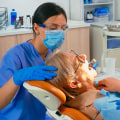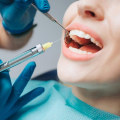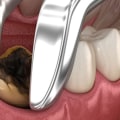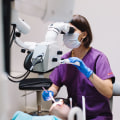Experiencing an unpleasant or foul smell coming from the mouth? Seeing secretions in or around the area? Gum swelling not going away after 24 hours? If you've recently had a tooth extraction, these could be signs of infection. Tooth extraction infection is a common complication that occurs when bacteria move to the removed area. How long it will take for the infected tooth after it is extracted depends on the severity of the infection. In most cases, patients are completely cured within one to two weeks.
When the painful condition isn't treated, bacteria can enter the bloodstream and cause additional problems. To avoid infections after the procedure, it's important to follow all of your dentist's advice. This includes keeping the site clean and avoiding smoking immediately after the root canal. It's also common for the area to swell a little after the procedure, but if it gets worse over time, it could be a sign of infection.
Pus from the extracted site is another sign to watch out for. If you see yellow or white pus in the tooth socket, call your dentist immediately. Pain is another symptom of infection after tooth extraction, and if it increases over time, it could be a cause for concern. Fever is another indicator of infection after a tooth is extracted.
If left untreated, the patient may suffer from sepsis - an infection caused by anything (virus, bacteria, fungi) that enters the bloodstream and can affect flow to the vital organs of the system. If you're concerned about signs of infection after oral surgery, call your dentist for an appointment. Here's what to consider if you're concerned about complications after tooth extraction: if you need a tooth extracted, your dentist will remove the tooth from your bone socket in the upper or lower jaw. To eliminate the infection after the extraction of one or more teeth, it is necessary to consult a dentist to prescribe antibiotics.
If you feel sharp, long-lasting pain after your tooth extraction, don't hesitate to call Family Dental Care — Munster for help. The best way to avoid infections after the procedure is to follow all of your dentist's advice and keep an eye out for any signs of infection.






